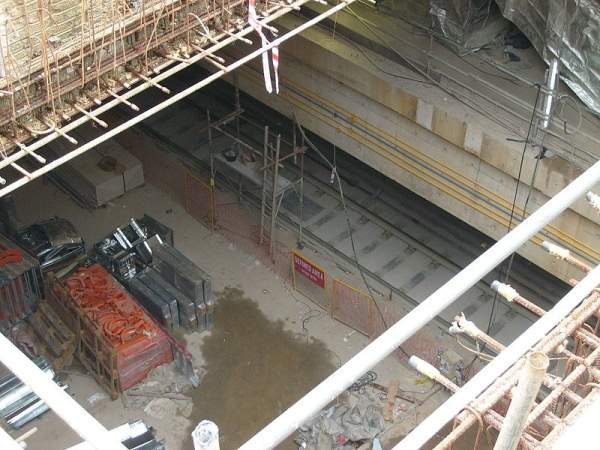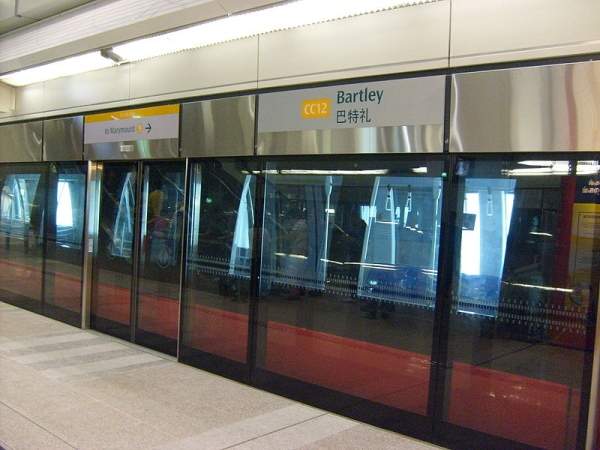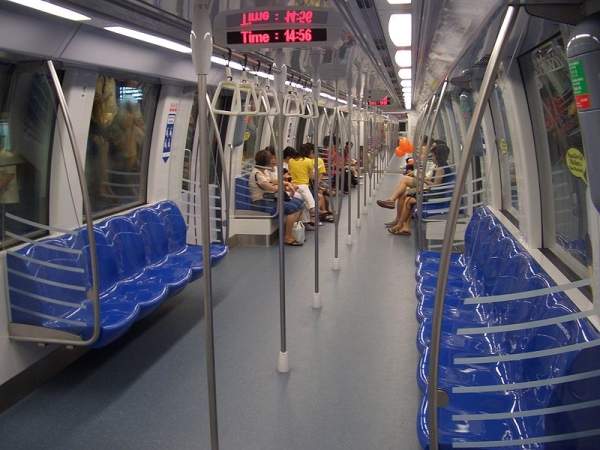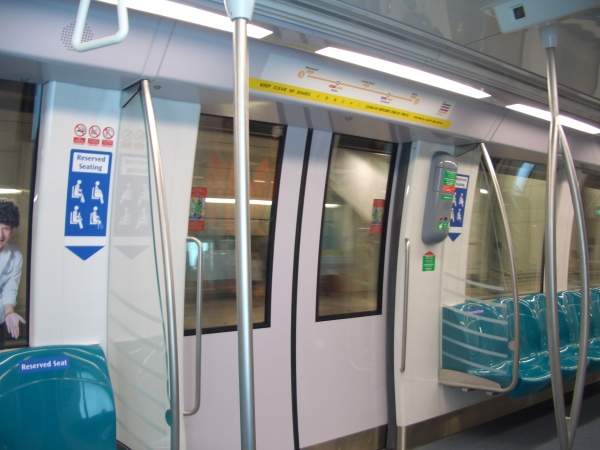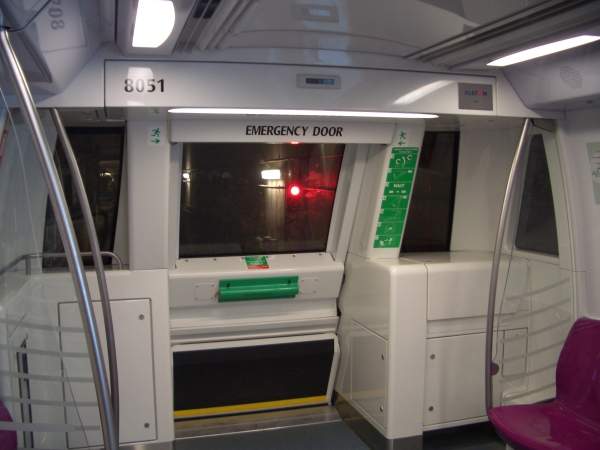The Circle Line (CCL) is the first fully underground orbital railway line connecting all mass rapid transit (MRT) lines running into Singapore, connecting the inner suburban areas of the city.
The line runs from Dhobi Ghaut to HabourFront and enables commuters to bypass traffic at busy interchanges, such as City Hall and Raffles Place. It will be extended by four kilometres (2.48mi) to Marina Bay by 2012.
The line is 33.7km (20.9mi) long with 29 stations. It is owned by Land Transport Authority (LTA) and operated by SMRT.
Plans to build the CCL were first proposed in 1980s. The initial plan was to build it as a 12-station underground line. It was later proposed to be extended to Upper Paya Lebar.
The LTA proposed extending the line to Bayfront Station in 2007 and further to Marina Bay station in 2008.
The line was planned to be fully completed by 2010 at a cost of S$6.7bn ($5.23bn), but was delayed due to the accidental collapse of the Nicoll Highway during construction in 2004.
The entire line except the Marina Bay extension became fully operational in 2011. Revenue services on the extension are expected to begin in 2012. The line is expected to carry half a million people a day when fully operational.
Circle Line project
The S$10bn ($7.81bn) CCL project had been built in five stages by October 2011. Stage one of the project included 5.4km (3.3mi) and six stations, from Dhoby Ghaut to Marina centre and between Nicoll Highway and Stadium Boulevard. It cost S$1.39bn ($1.08bn).
The S$1.55bn ($1.21bn) second stage included a 5.6km (3.5mi) line stretching five stations from Stadium Boulevard to Bartley Road. Stages one and two were opened for revenue service in April 2010.
The S$1.2m ($0.93m) stage three was a five station segment stretching 5.7km (3.5mi) between Bartley and Marymount. It was the first line opened for revenue service in May 2009.
Stages four and five involved 17km (10.5mi) length stretched between Marymount Road and HarbourFront centre, with 12 underground stations excluding one future station (Bukit Brown station). These two stages became fully operational in October 2011 and have cost S$2.5bn ($1.95bn).
Contractors involved in the construction / expansion project
Stage one construction work was contracted to the joint venture (JV) between Nishimatsu Construction and Lum Chang Building Contractors.
A JV between Woh Hup, Shanghai Tunnel Engineering and NCC International was awarded the civil works contract for the construction of Dhoby Ghaut, Convention Centre, Millenia and Museum stations and tunnels.
The consortium of Singapore Technologies Electronics and Alstom Transport was awarded the electrical and mechanical systems supply and installation contract for stages one and two. Environmental control and tunnel ventilation system was provided by SembCorp Engineers and Constructors.
Hock Lian Seng Infrastructure was awarded with the civil works contract for Kim Chuan Depot as part of the second stage of the project.
The civil works contract for MacPherson and Upper Paya Lebar stations was awarded to a joint venture of Econ Corporation and NCC International.
A joint venture between Nishimatsu Construction and Lum Chang Building Contractors was awarded with the civil works contract for Tanjong Katong, Paya Lebar and Old Airport Road stations and tunnels.
Tobishima Corporation was contracted for the construction of Bartley station as part of stage three. Cegelec supplied and installed the tunnel ventilation and environmental control systems. It was also contracted for the supply and installation of electrical systems for stages two through five.
Sato Kogyo was awarded the Lorong Chuan station construction contract. Taisei Corporation was awarded with the construction contract of Marymount station and tunnels. The joint venture between Econ Corporation and Eng Lim Construction designed and constructed the Bishan interchange station. The Serangoon interchange station construction contract was awarded to joint venture of Woh Hup, Shanghai Tunnel Engineering and Alpine Mayreder bau. The JV was also contracted for the construction of Holland, Buona Vista and NUH Stations in stages four and five.
Taisei Corporation was awarded a contract worth S$391.5m ($306.09m) for the construction of 6.3km (3.9mi) twin bored tunnels, Adam and Farrer station and rapid transit system facilities as part of stages four and five. Shinryo Corporation supplied and installed the Tunnel Ventilation System and Environmental Control System. The construction contract for West Coast, Telok Blangah, Pasir Panjang and Alexandra stations was awarded to SembCorp Engineers & Constructors.
Deluge Fire Protection supplied and installed the fire protection systems.
Rolling stock
The rolling stock includes 40 three-car Alstom Metropolis C830 trains. In January 2011, LTA ordered 16 additional train sets which are expected to be delivered by 2015.
The trains are manufactured by Alstom at Kim Chuan depot. The length of the car is 23.65m, width 3.21m and height 3.68m. The maximum speed of the train is 90km/h. Each train can carry up to 931 passengers.

